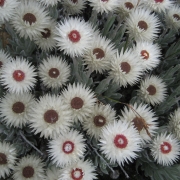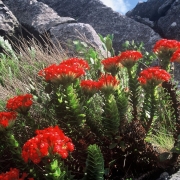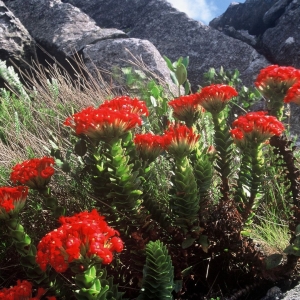Recommended Plant: Syncarpha vestita
Family: Asteraceae
Common names: Cape snow, White everlasting
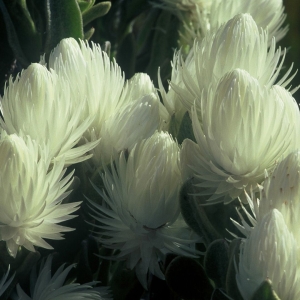
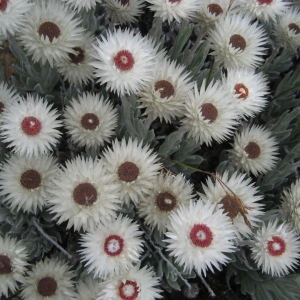
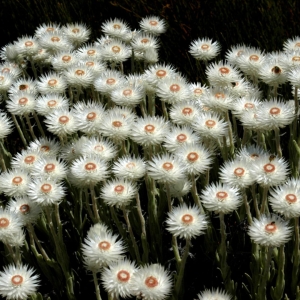
Syncarpha vestita is a spectacular everlasting daisy, much branched growing up to 1 tall with silver-grey furry foliage clustered up the stems. Each flowerhead has several closely overlapping bracts that surround a dense cluster of tiny purple flowers. The bracts are shiny white and papery and rustle gently in the wind. On cool, overcast days and at night the bracts enclose the flowers and only spread wide to reveal the flowers in warm sunshine. Flowering lasts several weeks while the tiny flowers open in sequence. In the Cape region this may start in late October and last until January. The bracts however persist and may be dried upside down and kept for years as a dry arrangement. Each tiny fruit is topped by a small tuft of bristles that helps carry it away on the wind. Although fast growing, the plant is relatively short-lived, with a life span of less than ten years.
Temperature and Lighting
Syncarpha vestita tolerates from 0-400 Celsius but should be protected from frost. It requires plenty of sun and good light conditions. It is a superb addition to a rockery or mixed planted in a garden.
Watering and Feeding
Syncarpha vestita should not be overwatered. Water well in the morning and then allow to dry out for the next few days between watering. Water in the morning to allow the foliage to dry to help prevent fungal infection of the woolly leaves. Cut back watering and feeding in the autumn/winter and keep slightly moist. Feed during the growing season with a weak liquid fertilizer solution.
Soil and Transplanting
Syncarpha vestita must be propagated in autumn from seed which germinates well providing that it is smoke treated. Smoke disks are available from Silverhill Seeds or you can smoke them using a bee smoker and some grassy or fine shrubby branches. Sow in a well-drained mixture of sand and well-rotted compost. The medium must be acidic ranging from about pH6,5 to-5.5. Young plants are best pricked out into plug trays and only potted on into larger containers when necessary. This is usually in the spring when the plants begin active growth.
Pests and Disease Control
Syncarpha vestita is a bit more challenging to grow particularly at seedling stage. It is recommended that seed is sown, and seedlings are grown on under cover so that you can control watering. Overwatering is problematic and may result in damping off. Therefore, it is very important to water the seedlings well and then allow the medium to dry out between watering being careful to monitor the medium and water again before they drought stress. Check for signs of fungal infection and use the appropriate fungicide to control it before it spreads or kills the young plant. Avoiding watering over the leaves in the evenings helps avoid fungal infection on the leaves.
USDA hardiness zones 9 to 11. Outdoors place the plant in a sunny spot with well-drained soil and good air

